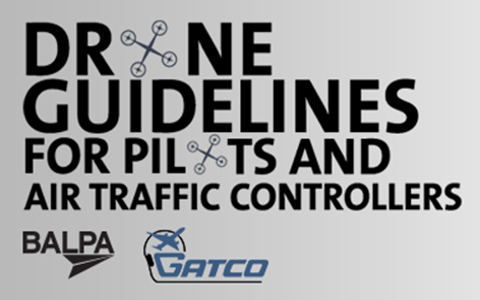Drone sightings by commercial aircraft are on the rise. There have been numerous cases of airspaces and aerodromes being closed around the world due to reports of drones in the vicinity. In recent months, GATCO has been working together with BALPA to publish a common set of guidelines so pilots and air traffic controllers understand each other’s concerns and actions when a drone sighting is reported and the event can be handled as safely as possible.

This set of guidelines are not a one-size-fits-all solution due to the dynamic and unpredictable nature of drone encounters but provide a starting point if more standardised procedures need to be implemented. They revolve around the following five key aspects of a drone encounter: speed, information, delay, avoidance and reporting.
Speed
Pilots: if a drone has been reported, consider requesting a speed reduction:
- Initially to minimum clean, including during departure
- On STAR, initial or intermediate approach, request a further reduction to 180kt
- On final approach, observe ATC speed constraints to maintain separation
ATC: expect pilots to request a speed reduction
Inform
Pilots: if a drone is seen, inform ATC immediately and pass as much accurate information as possible about the drone sighting:
- Location
- Altitude
- Lateral and vertical separation
- Was it moving or stationary
- Size, shape and appearance (e.g. quadcopter, camera underneath, colour, etc.)
ATC: inform supervisors, neighbouring sectors and pilots on and joining the frequency
Delay
Pilots: plan for possible delays or diversions
ATC: plan for possible delays and/or closure of airspace or aerodrome
Avoidance
Pilots: request alternative routeings or radar vectors if deemed necessary
ATC: consider the safety of the operation and avoid the area if deemed necessary
Report
Pilots: file the appropriate safety report as established by your airline.
ATC: file the appropriate safety report as established by your ANSP.
You can find more information on BALPA’s blog entry.
